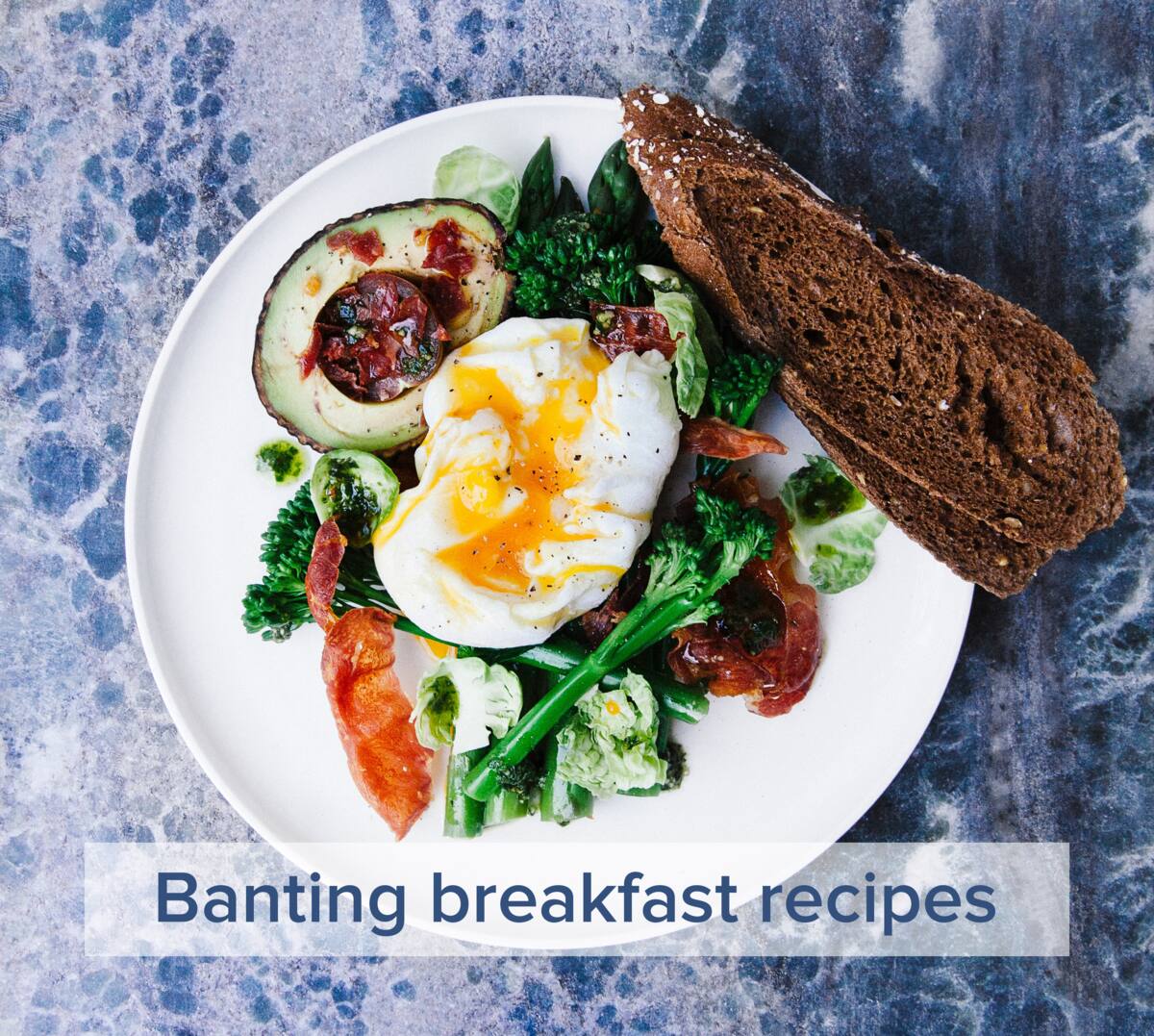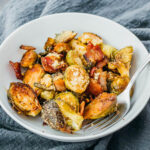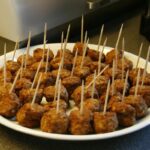Unlock sustained energy and vibrant health with the power of Banting-friendly power bowls! This comprehensive guide unveils the secrets to crafting delicious and nutritious bowls packed with energy-boosting ingredients, perfect for those following the Banting diet. Discover vibrant recipe variations, learn essential preparation techniques, and explore the science behind optimizing your power bowls for maximum energy throughout your day. Prepare to embark on a culinary journey that nourishes your body and fuels your life.
We’ll delve into the specific ingredients that make these bowls so effective, exploring the nutritional benefits of healthy fats, lean proteins, and low-carb vegetables. Learn how to create perfectly balanced meals that satisfy your hunger while keeping your energy levels consistently high. We’ll cover everything from selecting the right ingredients to mastering the art of presentation, ensuring each bowl is as visually appealing as it is delicious and nutritious.
Recipe Variations for Banting Power Bowls
Banting power bowls offer a delicious and satisfying way to enjoy a low-carbohydrate, high-fat diet. These recipes emphasize nutrient-dense ingredients that provide sustained energy throughout the day, keeping you feeling full and focused. The beauty of these bowls lies in their adaptability; you can easily swap ingredients to suit your preferences and what’s available. Let’s explore three vibrant and energizing options.
Chicken and Avocado Power Bowl
This bowl bursts with fresh flavors and creamy textures. The vibrant green of the avocado contrasts beautifully with the golden-brown chicken and the colorful medley of vegetables.
- Cook the Chicken: Pan-fry or bake 150g of chicken breast until cooked through and slightly browned. Season generously with salt, pepper, and your favorite herbs (e.g., rosemary, thyme). The chicken should be tender and juicy, offering a satisfying chew.
- Prepare the Vegetables: Chop 1 cup of cherry tomatoes in half, finely dice ½ a red onion, and slice 1 cup of cucumber into half-moons. The tomatoes add a pop of sweetness and juicy texture; the red onion provides a slight bite; and the cucumber offers a refreshing crunch.
- Assemble the Bowl: Place a bed of mixed greens (e.g., spinach, arugula) in a bowl. Top with the cooked chicken, halved cherry tomatoes, diced red onion, cucumber slices, and ½ a ripe avocado, sliced or diced. The vibrant green of the avocado contrasts beautifully with the red tomatoes and the deep green of the greens. The avocado’s creamy texture provides a luxurious counterpoint to the firmer chicken and vegetables.
- Dress and Garnish: Drizzle with a healthy fat such as 2 tablespoons of olive oil or avocado oil. A squeeze of lemon juice adds brightness. Optional garnishes include chopped fresh cilantro or a sprinkle of everything bagel seasoning. The dressing binds all the elements together, enhancing the flavors and textures.
Salmon and Broccoli Power Bowl
This recipe offers a delightful combination of rich, fatty salmon and nutrient-packed broccoli. The colors are striking, the textures varied, and the flavors are both delicate and satisfying.
- Prepare the Salmon: Bake or pan-fry 150g of salmon fillet until cooked through but still moist. Season with salt, pepper, and a squeeze of lemon juice. The salmon should flake easily with a tender, slightly firm texture. Its rich, slightly oily flavor is the star of this bowl.
- Roast the Broccoli: Toss 2 cups of broccoli florets with 1 tablespoon of olive oil, salt, and pepper. Roast at 400°F (200°C) for about 15-20 minutes, until tender-crisp. The roasted broccoli offers a slightly sweet and nutty flavor with a satisfyingly firm-yet-tender texture.
- Assemble the Bowl: Arrange the roasted broccoli in a bowl. Top with the cooked salmon, broken into flakes. The contrast between the bright green of the broccoli and the orange-pink of the salmon is visually appealing.
- Dress and Garnish: Drizzle with 1-2 tablespoons of a healthy fat, such as olive oil or avocado oil. A sprinkle of toasted sesame seeds adds a pleasant crunch and nutty aroma. The sesame seeds add a subtle earthy note that complements the salmon and broccoli.
Beef and Cauliflower Power Bowl
This hearty bowl features tender beef and creamy cauliflower, creating a satisfying and visually appealing meal. The textures and colors complement each other perfectly.
- Cook the Beef: Stir-fry or pan-fry 150g of lean beef, cut into bite-sized pieces, until cooked through. Season with salt, pepper, and garlic powder. The beef should be tender and flavorful, providing a hearty protein source.
- Roast the Cauliflower: Cut 1 medium head of cauliflower into florets. Toss with 1 tablespoon of olive oil, salt, pepper, and your choice of spices (e.g., paprika, cumin). Roast at 400°F (200°C) until tender and slightly browned. The cauliflower offers a creamy texture and a slightly sweet flavor, enhanced by the roasting process. The spices add depth and complexity.
- Assemble the Bowl: Place the roasted cauliflower in a bowl. Top with the cooked beef. The contrast in color and texture between the creamy white cauliflower and the browned beef is visually striking.
- Dress and Garnish: Drizzle with 1-2 tablespoons of olive oil or ghee. A sprinkle of chopped fresh parsley adds a pop of green and a fresh, herbaceous flavor. The parsley brightens the overall presentation and taste.
Macronutrient Comparison
The three recipes offer slightly different macronutrient profiles, all while staying within the Banting guidelines. The chicken and avocado bowl will likely be higher in healthy fats from the avocado and olive oil, while the salmon bowl will have a higher concentration of omega-3 fatty acids. The beef and cauliflower bowl provides a good balance of protein and healthy fats, depending on the cut of beef used. All three bowls are designed to provide sustained energy through a balance of protein and healthy fats, minimizing carbohydrate intake. The specific macronutrient breakdown will vary depending on the exact ingredients and portion sizes used.
Step-by-Step Guide to Building a Banting Power Bowl
Crafting the perfect Banting power bowl is an art, balancing delicious flavors with the nutritional needs of the diet. This guide will walk you through the process, from selecting vibrant ingredients to achieving a visually appealing and energy-boosting final product. Remember, consistency is key to reaping the benefits of this healthy eating plan.
Proper portioning is crucial for maintaining balanced macronutrients and achieving optimal energy levels throughout your day. A well-constructed Banting power bowl should include a good balance of healthy fats, protein, and low-carb vegetables. Visualizing the bowl divided into thirds – one-third protein, one-third vegetables, and one-third healthy fats – can be a helpful guide.
Ingredient Preparation
Before assembling your power bowl, prepare all ingredients. This ensures a smooth and efficient assembly process and allows you to focus on creating a visually stunning and delicious meal. Proper preparation also enhances the overall flavor and texture of the finished product.
- Wash and chop vegetables such as broccoli florets, bell peppers (various colors for visual appeal), spinach leaves, and zucchini into bite-sized pieces. Imagine the vibrant greens and yellows contrasting beautifully against other ingredients.
- Cook protein sources such as grilled chicken breast (sliced into strips for easy consumption), salmon fillets (flaked and seasoned with herbs), or hard-boiled eggs (sliced in half). The protein should be cooked thoroughly and seasoned appropriately for maximum flavor.
- Prepare healthy fats such as avocado slices (their creamy texture adds richness), a drizzle of olive oil, or a sprinkle of chia seeds. The visual contrast between the smooth avocado and the other ingredients enhances the overall presentation.
- Consider adding a small amount of healthy nuts or seeds for added texture and crunch, such as macadamia nuts or pumpkin seeds. Their subtle flavors and varied textures add another dimension to the power bowl.
Assembling the Power Bowl
The arrangement of ingredients is as important as their selection. A visually appealing bowl is more likely to be enjoyed and will encourage mindful eating. Consider the colors, textures, and shapes of your chosen ingredients.
- Start with a base of leafy greens, such as spinach or kale, creating a vibrant foundation for the rest of the ingredients. Picture the dark green leaves forming a beautiful bed for the other colorful elements.
- Arrange the protein source strategically, perhaps in a circular pattern or nestled amongst the vegetables. The protein should be visible and easily accessible for consumption.
- Add the chopped vegetables, creating a colorful and textured mix. Aim for a variety of colors and shapes to make the bowl visually appealing.
- Incorporate the healthy fats, such as avocado slices or a drizzle of olive oil, to add richness and visual interest. The creamy avocado adds a nice contrast to the other ingredients.
- Finish with a sprinkle of nuts or seeds for added texture and visual appeal. The added crunch adds a pleasant textural contrast to the softer ingredients.
Proper Food Storage and Reheating
To maintain the nutritional value and flavor of your Banting power bowl, proper storage and reheating techniques are essential. This ensures that your meal remains both delicious and healthy, even when enjoyed later.
- Store leftover power bowls in airtight containers in the refrigerator. This prevents the ingredients from drying out and helps maintain their freshness.
- When reheating, avoid microwaving, as this can significantly reduce the nutritional value and alter the texture of the ingredients. Instead, gently reheat in a pan on the stovetop or in a preheated oven at a low temperature.
Optimizing Banting Power Bowls for Energy

Banting power bowls, with their emphasis on healthy fats, protein, and low-carb vegetables, offer a fantastic foundation for sustained energy. However, maximizing their energy-boosting potential requires careful consideration of nutrient composition and preparation techniques. By understanding the role of key vitamins and minerals and avoiding common pitfalls, you can transform your Banting power bowl into a truly energizing meal.
The sustained energy provided by a well-constructed Banting power bowl stems from a synergistic effect of several key nutrients. Healthy fats, like those found in avocados and olive oil, provide a slow-release energy source that prevents energy crashes. Protein, abundant in sources such as chicken, fish, and nuts, contributes to satiety and stable blood sugar levels, preventing mid-afternoon slumps. Crucially, various vitamins and minerals play supporting roles. Vitamin B12, often found in eggs and certain fish, is essential for energy production at a cellular level. Iron, present in leafy greens like spinach (often included in smaller quantities in Banting bowls), supports oxygen transport throughout the body, enhancing energy levels. Magnesium, often found in nuts and seeds, plays a critical role in energy metabolism. A well-balanced Banting power bowl incorporates these vital components for optimal energy production.
Common Mistakes Hindering Energy Levels in Banting Power Bowls
Many seemingly minor details in the preparation of Banting power bowls can significantly impact their energy-boosting capabilities. Overlooking these aspects can lead to disappointing energy levels despite following the Banting principles.
Three common mistakes frequently encountered include:
- Insufficient Protein: A power bowl lacking sufficient protein will lead to blood sugar fluctuations and subsequent energy crashes. Solutions include increasing the portion of protein-rich foods like chicken breast, salmon, or grass-fed beef. Adding a handful of nuts or seeds also boosts protein intake.
- Neglecting Healthy Fats: Healthy fats are crucial for sustained energy release. Forgetting to include sufficient sources like avocado, olive oil, or nuts will result in a less satisfying and less energizing bowl. Solutions include incorporating a generous amount of healthy fats into the base or as a topping. A drizzle of olive oil or a dollop of avocado can make a significant difference.
- Inadequate Variety of Vegetables: While focusing on low-carb vegetables is crucial for the Banting diet, limiting the variety can lead to nutrient deficiencies that impact energy. A diverse range of vegetables provides a wider spectrum of vitamins and minerals. Solutions include incorporating a colorful array of vegetables such as broccoli, bell peppers, spinach, and zucchini for a broader range of nutrients.
Tips and Tricks for Maximizing Energy-Boosting Potential
Careful planning and mindful choices can significantly enhance the energy-boosting properties of your Banting power bowl. Timing and pairing with other foods can also play a crucial role.
Several key strategies include:
- Strategic Timing: Consuming your Banting power bowl as a substantial breakfast or lunch provides sustained energy for the following hours. Avoiding it too close to bedtime prevents potential sleep disturbances.
- Pairing with Beverages: Pairing your power bowl with unsweetened herbal tea or water enhances hydration and aids digestion, contributing to better energy levels. Avoid sugary drinks, which can lead to energy crashes.
- Prioritize Nutrient Density: Choose nutrient-dense ingredients. For example, opting for wild-caught salmon over farmed salmon provides a higher concentration of omega-3 fatty acids and other essential nutrients. Similarly, choosing organic vegetables whenever possible minimizes pesticide exposure and maximizes nutrient uptake.
Mastering the art of the Banting power bowl is not just about creating delicious meals; it’s about fueling your body with the right nutrients to sustain energy and vitality. By understanding the principles of balanced macronutrients and incorporating vibrant, energy-boosting ingredients, you can transform your meals into powerful tools for a healthier, more energized you. Experiment with the diverse recipes and tips provided, and discover the joy of creating personalized power bowls that perfectly suit your taste and dietary needs. Embrace the vibrant flavors and sustained energy that await!
Expert Answers
Can I add nuts and seeds to my Banting power bowls?
Yes, many nuts and seeds are Banting-friendly, but moderation is key due to their calorie density. Choose options like almonds, macadamia nuts, and chia seeds.
How long can I store a prepared Banting power bowl in the refrigerator?
Ideally, consume your power bowl within 2-3 days for optimal freshness and nutritional value. Store in an airtight container.
Are there any Banting-friendly sweeteners I can use in my power bowls?
While the Banting diet emphasizes minimal added sugar, small amounts of stevia or erythritol can be used sparingly if desired.
What if I don’t like one of the suggested ingredients in a recipe?
Feel free to substitute with other Banting-approved ingredients that offer similar nutritional profiles. For example, you could swap chicken for fish or broccoli for cauliflower.


